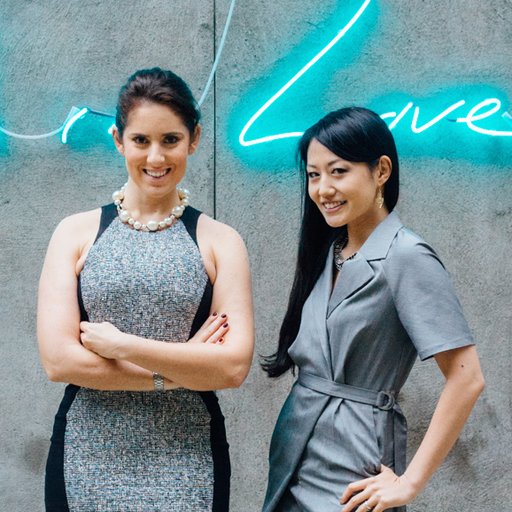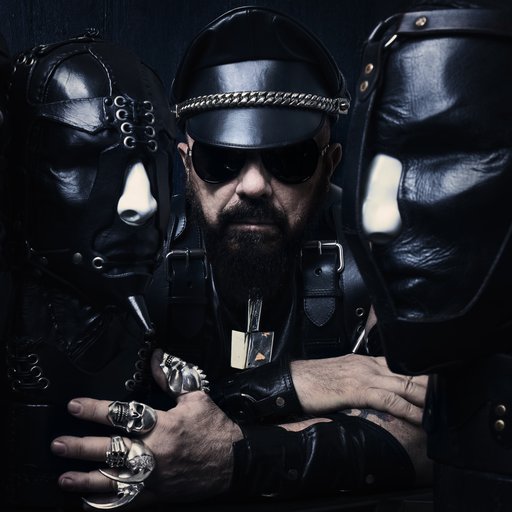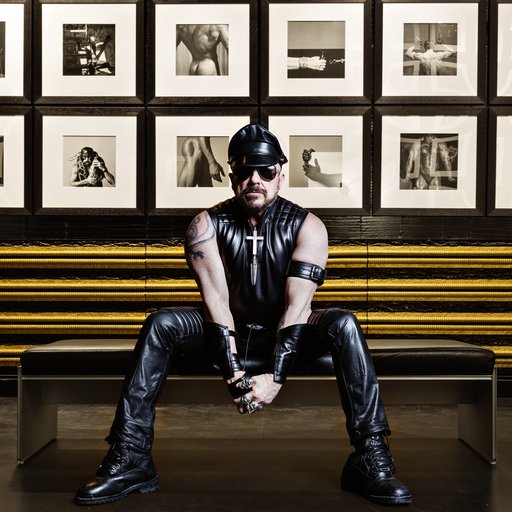One of America's preeminent fashion success stories, John Varvatos built his brand through a combination of rock-and-roll attitude, Detroit grit, and decades of transformative work at two of the biggest global menswear brands: Ralph Lauren and Calvin Klein. In the second part of Artspace editor-in-chief Andrew M. Goldstein's interview with the designer, Varvatos talks about the genesis of his namesake label—and his newfound ambition to remake the music industry.
RELATED LINKS
John Varvatos on How a Detroit Punk Band Inspired Him to Build an American Fashion Empire
You had a triumphant homecoming at Ralph Lauren when you returned in 1995, now as head of menswear across the global company. What was the key insight that you took away from your experience at this empire, considering how different a direction you later took at your own brand?
What I got out of the whole thing was, really, you need to be true to yourself. You need to have a vision. You can never follow—you have to lead. You need to be able to tell your story, and lifestyle is so important to doing that. The Polo shirt’s important, but if it was just about that it would never be a long-term business. It’s about a whole lifestyle. And it’s about team. That’s something I also learned so much about, that it’s the team that makes the whole. It wasn’t just about Ralph. He set the vision, but there were a lot of people who brought a lot of value to that.
You, obviously, being one of them.
Yeah, and I think he appreciates that. We have a very warm relationship still today.
In ’99, when you decamped to found your own John Varvatos brand, you at last fully embraced the rocker style of your youth. What was the central vision you had for the brand when starting out?
There’s a story I tell that I was walking through the men’s floor of Barney’s one Sunday—this was 1999—and I saw Jil Sander, Helmut Lang, Prada, Gucci, and Hugo Boss, and the clothes were all the same: black, and black nylon. Hugo Boss is always the follower, knocking off what everybody else does, but I saw that there was a very similar thing happening out in the broader marketplace as well. And I thought, “Wow. What a perfect time to do something different.”
At the time I arguably had the best job in the entire fashion industry in terms of being at the biggest brand in the world—and it still is—so I could have sailed into the sunset there, really. And I was 40 years old at the time, with a family and everything else, which is not usually when people walk away from a great job. But that day I decided to walk away and do my own thing. It was impulsive, but the strategy that appeared so clearly to me was that there’s a whole opportunity to combine an old-world sensibility and vintage-ness with a modern edge. I don’t see anything else like that out there—I either see very sleek, or very classic, or crazy fashion. But that’s what I set out to do, and that’s been my mantra since I started.
When drawing up the brand, did you look back to that Stooges photograph and that proto-punk style?
I looked to a lot of things, and that was something I looked at. When I started there were tidbits of that throughout the collection, but it’s always a whole combination of things that influence me, from military uniforms to the artisanal way that things are made to the music end of things to masculinity, too. Everything in fashion was starting to become a little bit feminine. “Metrosexual” was the word— everybody was talking about that, and I was like, “Okay, I get it,” but there are guys that want to look masculine. They don’t want to wear a sheer shirt, and they don’t want to wear sweaters that are open. They want to look tough and they want to look masculine. I respect all aspects of fashion, but that’s what my vision is.
The artist Jasper Johns once said: “Style is only common sense. You figure out what people like about you, and you exaggerate it.” You found success by doing something similar with the masculine look, amping up its rough elements and making it buyable off the rack. It seems that what men really respond to in your clothes is a certain attitude. How do you describe that attitude?
I think a lot of it comes from attention to detail. It’s all in the details, really. There’s a uniqueness to everything we do. We develop almost all of our own fabrics, we develop our own leathers. And you can’t really compare us to anybody else—I’ve read thousands and thousands of reviews and articles about the brand over the year, and there’s not one person who has ever compared our brand to anybody else. What I do see today is that people compare other brands to us now: “It’s looking very Varvatos,” or, “It has a Varvatos feel to it.”
To me, everybody’s goal in life should be to create their own style, and I believe that we have totally done that. Yes, I look to my past, but only for inspiration, not for literal quotation. There’s nothing I’ve ever done that’s been literal. Even a few years ago, when the Hendrix family asked us to do a collection that celebrated Jimi’s life, I said, “I love Jimi’s clothes, but I don’t wanna do those. There’s no reason for me to copy those things. So let me do something that represents Jimi in 2013—let me do something that represents who Jimi was as a person, so it’s still Hendrix-like and has a great attitude and a spirit of life but doesn’t feel like a throwback or a costume.”
Speaking of the Varvatos attitude, what did you make of the Hedi Slimane years at Saint Laurent? That was one brand that sought to tap into the rock and roll, punk attitude as well.
I believe that Hedi is a super talented guy, and a great marketer as well. But he kind of hit nerves with people. In a way, he did a lot of things that we did, and I’m not saying he copied us, I’m just saying he did it a lot. His inspirations were similar to mine at times, though his execution was totally different. And that’s what’s great about fashion—you can be inspired by similar things, but your interpretations can be totally different. So what did I think? I think he gave a great shot in the arm to the fashion world.
The execution was different, and moreover the price points between your brands were so different. He was making the rock-and-roll look for billionaires.
I won’t even speak to that part of it, because that part I just don’t understand. But somehow it works, because they market it and it works. Not to say that Saint Laurent’s fashion business is that huge—for them it’s more about accessories, footwear, fragrances, and all of those things. If you look at the apparel part of it, it’s not a monstrous business. You go to their store and walk into menswear and they’ve only got 25 items. You walk into our store and there’s a thousand items. So it’s a different kind of thing. It doesn’t mean one’s better than the other, it’s just a very different approach.
So, who would you say is the Varvatos customer?
I think he’s a guy who has a bit of a creative bone in him. It doesn’t mean he’s a writer, artist, photographer, actor, musician, but there’s something about him that lets him connects with those people. He’s also someone who’s not a follower. He doesn’t want to wear a uniform. If someone comes out with a collection and it’s about those 20 styles, he doesn’t want to be part of that. He wants to put his own look together and create his own style. I also think he’s someone who has confidence, so he’s comfortable without logos. A lot of our industry is about that logo or that branding. We’re the opposite of that.
Are there any contemporary cultural icons who embody, for you, the Varvatos style?
I meet people all the time who do, but it’s less about the celebrities than people who I meet who just have something very cool about them, who have an aura about them. I can be inspired by them, too. Then I’m sure there are the celebrity ones, which everyone wants to know about. But I look less to those, actually, than I look to the interesting guy who’s an artist, or a photographer, or a writer. Again, he’s a creative guy—or girl. And I look to some of the rebels, but there aren’t enough of those out there today. There aren’t enough people out there who are pushing the boundaries in any field today. When you say, “Who are the rebels today that people want to hear about?” I think, well, Miley Cyrus—she’s a rebel. And most of the rebels today are women.
Interesting.
When you think about the true rebels, I mean. Steve Jobs, he was a rebel. Who’s the next Steve Jobs? It doesn’t have to be electronics, but in any field. So, Elon Musk—he’s a rebel. Those are the people I’m intrigued by. Not always necessarily because of their style, but because, as Steve Jobs would say, they “think different.” And they’re not as obvious as they used to be.
Another element that I look for today is, who’s the Renaissance man? Who’s that man who embodies quality of life, an artistic approach, caring about the world, and all those other things? I think that they’re out there, for sure. And I’m looking for them. But I think the world is more about “me” today than it is about any causes. Even with this election, it’s very obvious in the end that we’re dealing with two crappy candidates in the greatest country in the world—and that’s all we got to offer? One that nobody trusts—even if she’s unquestionably smart, and has all the impressive things about her—and one who’s just scary, okay? This is what we are we ending up with? So, for me, that’s why I’m on a mission even more today to ask, “Who are the rebels? Who are the leaders of the future?”
People don’t use their voice anymore. The way people use their voice today is socially, but not for social consciousness. I’m stereotyping here—there are people who definitely do raise their voice for social consciousness—but the whole social-networking phenomena is not about changing the world. When I grew up, it was all about changing the world. It was all about peace, love, and changing the world. And, when I was growing up through the Vietnam War, it was all about protesting. If what is happening right now was happening in 1972 when I was in high school, there would be protests all over the place. There would be different candidates than there are today. It’s a different world now.
Speaking of rebels, in 2008 you made headlines by taking over Hilly Kristal’s old CBGB space on the Bowery in New York, a historic shrine of punk rebellion, and transforming it into a showpiece Varvatos store mixing music memorabilia and clothes. In the years since then, you’ve published a book called John Varvatos: Rock in Fashion, you’ve launched a radio show on Sirius XM, and in 2014 you started a record label. What is behind this movement away from pure fashion into music and culture?
It’s a passion, 100 percent. It’s about wanting to find the next great Guns N’ Roses, or the next great Nirvana, or the next great Marvin Gaye. Looking at the music industry the way it is today, it’s all about the single and pop music. If I could have the slightest bit of impact on that, it would be great. I want to help young artists have a broader audience by exposing them to new people, because one of the great things about being a lover of anything is turning people on to it. I can’t play music for them very well myself, but I can say, “I want you to listen to this music.” The ideal is to expose people to something they never otherwise would have heard and have them say, “Wow, this is amazing.” Genuinely.
I work with young artists at the label, and I only work with people that I’m super passionate about and really believe in. It’s not only a commercial thing—in fact, there’s really very little commercial thinking at the label, other than that I want the artists to be successful. It’s just something I love, and it also is something that has become intertwined with my brand, and that has created a culture around our brand as well.
That’s why we have this iconic space in New York City that we’ve treated super respectfully. Now, not everybody would agree with that. There will be people who say, “They should have never gone in there.” And I would say, “I appreciate your comments, but would you feel more comfortable if there was a Bank of America in there? Would you feel more comfortable if Duane Reade was in there?” Those were actually the kinds of other buyers who were looking at it.
I wanted people to feel comfortable that at least they can walk in there and still capture some of that emotion. You don’t have to buy a thing, but the door is always open to you—and, if you just happen to be around, we do a lot of concerts there with amazing artists that we want to turn you on to, and we never charge for it. So what’s have we done that’s so bad with a place that had been closed for over two years? We didn’t shut it down.
Was there a business strategy behind buying the space?
There wasn’t a great plan around it. There are plans as things grow, but I didn’t have this long-term strategy that I was going to get CBGB and then start a record label—none of those things were on the roadmap. Actually, it was a mistake that I was even there when I first saw that it was for say, and I asked, “Wow, what are they going to do with this space?“ And they said, “Oh, we’re talking to Bank of America, we’re talking to Duane Reade.“ I said, “Are you kidding me?” So whether people agree with it or not, I bought it to try and continue to keep that place alive—to try to keep music alive in the Bowery.
And I will tell you that I believe I won most people over on that. I’m never going to win everybody over, and I’m not going to spend a lot of time trying to. We just do what we do and hopefully it’s the right thing. It’s the same with the record label. I didn’t go into it to be a record executive or necessarily to get gold records—although we did get a gold record with our label. I did it because I love music, and I want to help these artists, and I’ll have fun while I’m doing it because it’s the spot I feel comfortable in. I feel very lucky.
It’s interesting that you’ve faced criticism for preserving CBGB, while now, in London, Joseph Corré, the son of Malcolm McLaren and Vivienne Westwood, has promised that he will burn millions of dollars worth of punk memorabilia this fall in protest of the way the movement has been commercialized. What do you make of that gesture?
Crazy. Hey, listen—everybody’s entitled to their opinion, and their love of certain things. If that’s what he feels he needs to do, I don’t understand it, but this is the world—what comes around, goes around. Everybody can find something at fault with everything.
Now, on a more generative note, you’ve also opened store in your hometown of Detroit that has a sizable music component—is that right?
We sell vintage records and new vinyl, just like on the Bowery, and we sell vintage audio equipment in there. There’s a whole audio shop on the second floor.
So what’s the next step, in terms of leveraging the clothing, the music, the spaces, and everything all together?
I don’t know, it’s organic. I think when you get too strategic with it, you get too commercial. I like to do things when I’m inspired, like starting my own collection when the lightning bolt hit me, or taking CBGB over when the lighting bolt hit me, or starting a record label or the lace-less Converse sneaker or whatever. I like things to happen. Those weren’t a strategy, they happened. It doesn’t mean you don’t build a strategy around it then, but the initial aspect needs to feel quite organic and natural to you. I don’t want to do something that feels exploitive.
I am definitely building the record label, though, and we’re building a great roster of artists who what I think are some of the next great singer-songwriters and artists. I just had dinner with one of our artists last night—Andrew Watt, he’s a rocker—who wrote a song [“Let Me Love You”] and gave it to Justin Bieber and DJ Snake, and it’s a number one song right now.
No kidding.
You need to remember, it’s Justin Bieber, too. But it’s a great song. I don’t really have anything to do with it, except that I’m nurturing him. We’re putting his own music out as well. But, talk about a real Renaissance young man—here’s a guy who can write, produce, musical-direct. He’s 23 years old. He really wants me to help guide him to navigate through his life, not only musically but his broader career, and help some of his dreams come to fruition. If I can do it, I’ll be there to help him, you know?
You’ve done famous John Varvatos campaigns with famous musicians like Iggy Pop, your inspiration, and Ringo Starr. I imagine that one of the best ways to give exposure to the young musicians on your label would be to use them as models in your ads.
Well, I’ve put out a number of records so far, and I haven’t yet. I will when it’s the right thing, but, first of all, I would never put someone in my ad campaign just to market them. It’s got to be right. They have to be right for the brand, and we have to be right for their brand. It has to mesh. You never want the consumer to say, “That doesn’t really look like them—they’re just wearing Varvatos.” Or, “Varvatos is just using them,” or vice versa.
We’ve featured amazing people over time, both young and old, from Gary Clark Jr. with Jimmy Page, to Green Day, to The Roots, Alice Cooper, Iggy Pop. But I had a reason for doing each of them, and it wasn’t a commercial reason. It wasn’t tied to the record label. It was something that I did because I was inspired by them—because they were the bad boy that I was looking for. And, except for Ringo, they were all pretty much bad boys.
It strikes me that another label getting into this area now is Brioni, which featured Metallica in their first campaign after Justin O’Shea took over as creative director.
It’s kinda sad. I usually wouldn’t comment on other people, but if you read any of the articles about that, everybody kind of called it “Varvatos light”—that they’re really trying to do what we did. I’m surprised at Metallica, actually. But hey—whatever. Maybe they’re big Brioni fans, I don’t know. But there’s no correlation there. With our brand, there’s always been a correlation—I’m a huge music junkie and everybody knows it. There is no correlation between Metallica and Brioni. There’s also nothing very rock-and-roll about Brioni’s clothing. It’s the most classic kind of expensive clothing. It’s the opposite of rock and roll. It’s a strange marketing thing.
What’s so rock-and-roll about an Italian-tailored $8,000 suit?
Listen, we’re not inexpensive, so I can’t throw mud. But we’re hell of a lot less expensive than Brioni.
It must feel good that you have found something that other people want to tap into.
Oh, for sure. There’s no doubt about it. There’s a part of success that’s about when people copy you, and that’s whether they knock our clothes off or our lace-less sneaker or any of the things that we’ve done over time. In fact, we’ve won a few lawsuits because of people knocking us off. So, from one perspective, those are compliments, because when people stop knocking you off you’re no longer the cool brand. It also shows who you’ve got to keep moving.



























